
Rakuten Travel Recommends: 30 Famous Sightseeing Destinations and Hidden Gems in Shikoku
Let’s head to Shikoku!
Kagawa Prefecture's udon noodles, the hidden gems of Tokushima Prefecture, Ehime Prefecture's historic roots as Iyo Province, and the blessings of nature that abound in Kochi Prefecture — with so much to offer, Shikoku is truly fascinating! From famous sightseeing destinations to unexpected hole-in-the-wall places, here is a compilation of our 30 recommended spots to check out before you head to Shikoku.
Contents
Ehime Prefecture
Matsuyama City, Ehime Prefecture
Dogo Onsen Honkan
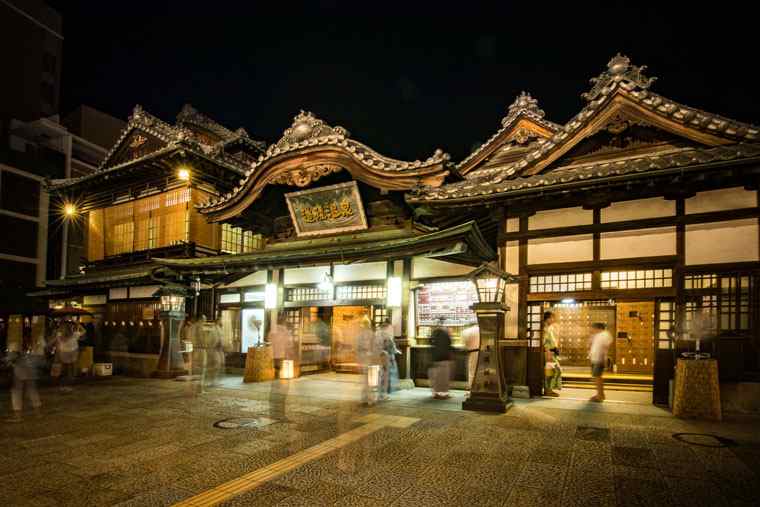
Renowned as one of Japan’s three oldest hot springs, Dogo Onsen is in fact the oldest hot spring town with a history that spans over 3,000 years. It has been visited by members of the imperial family, Prince Shotoku, and novelist Natsume Soseki. Entering the bath at 6:00 a.m. every morning to the sound of taiko drums is the highlight of this hot spring. Famous for being used as a model in Japanese animation and designated as an important cultural property, Dogo Onsen Honkan is a must-visit hot spring.
- Hours of operation
- 6:00 a.m.–11:00 p.m.
- Access
- About three to four minutes on foot from Dogo Onsen Station after a train ride from Matsuyama Station.
Imabari City, Ehime Prefecture
Kurushima Straits Bridge, Kurushima Strait Outlook Museum
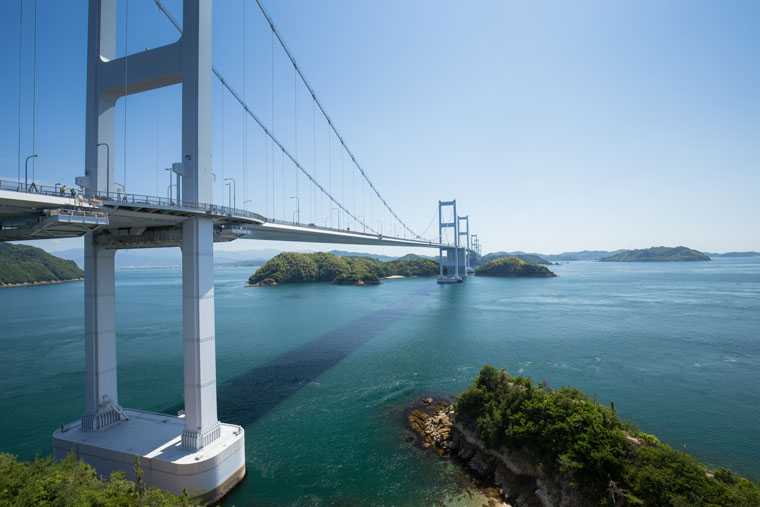
The Kurushima Straits Bridge connects Imabari City in Ehime Prefecture to Oshima Island in the Seto Inland Sea. It’s the world’s first three-span suspension bridge that hangs over the Kurushima Straits, known as one of Japan’s Three Great Tidal Currents. Hop on a bicycle or take a stroll on the bicycle-pedestrian path and gaze upon the tidal rapids and whirlpools. Be sure to visit the Kurushima Strait Outlook Museum after crossing the bridge for a panoramic view of the whole thing.
- Hours of operation
- 9:00 a.m.–6:00 p.m.
- Access
- About 35 minutes by Limited Express from JR Matsuyama Station to Imabari Station on the JR Yosan Line.
Niihama City, Ehime Prefecture
Besshi Copper Mine, Besshi Copper Mine Memorial Museum
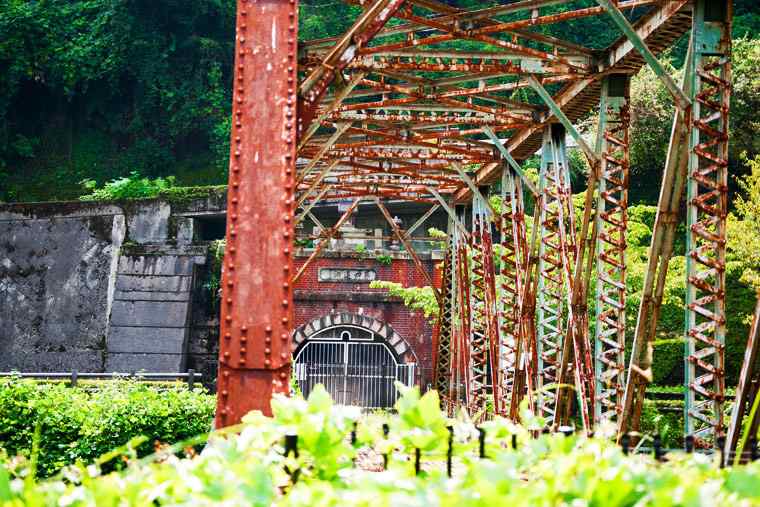
Once the world’s largest copper producer, the Besshi Copper Mine contributed to Japan’s trade and modernization. Today, it’s an historical heritage site in the skies that has earned the alias, “Machu Picchu of the East”. Try your hand at copper plating and relief making at the Tonaru Mine Workshop located within the facility. While you’re there, it’ll be good to stop by the Besshi Copper Mine Memorial, opened in 1975, where historical documents on the operations of the copper mine are showcased.
- Hours of operation
- 9:00 a.m.–4:00 p.m.
- Fees
- Free
Matsuyama City, Ehime Prefecture
Matsuyama Castle
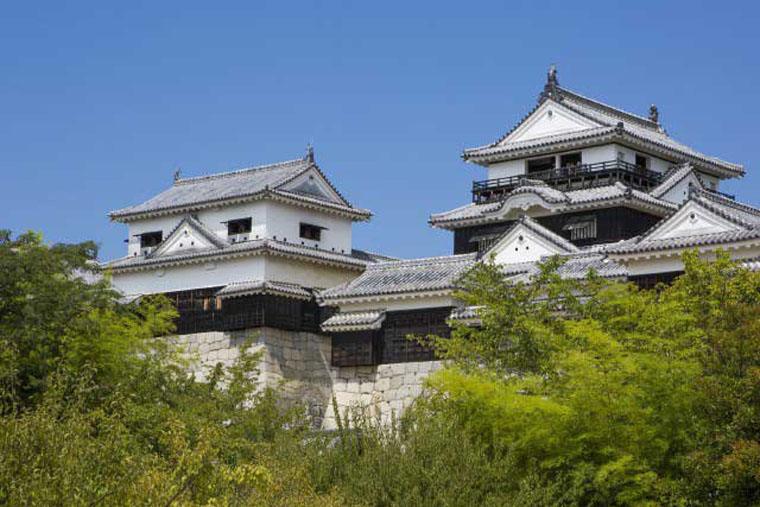
This castle was selected as a two-star spot in the Japan section of a well-known French travel guide. It’s sometimes referred to as Kanagame Castle or Katsuyama Castle, but it is mostly called Iyo Matsuyama Castle to distinguish it from Matsuyama Castles in other parts of Japan. Today, while the main part of the castle ruins is maintained as a park, the 21 existing structures (including the main keep) are designated as national important cultural properties, and the castle remains are designated as a national historic site.
- Hours of operation
- February–July: 9:00 a.m.–5:00 p.m.
August: 9:00 a.m.–5:30 p.m.
September–November: 9:00 a.m.–5:00 p.m.
December–January: 9:00 a.m.–4:30 p.m. - Fees
- Matsuyama Castle Keep admission ticket: adults, 510 JPY; elementary school students, 150 JPY
Roundtrip ticket for the ropeway and chairlift: adults, 510 JPY; elementary school students, 260 JPY
One-way ticket for the ropeway and chairlift: adults, 270 JPY; children (elementary school age), 130 JPY
General ticket (admission ticket and roundtrip ticket): adults, 1,020 JPY; children (elementary school age), 410 JPY - Access
- About 10 minutes on foot from Iyotetsu Matsuyama City Station.
About 15 minutes on foot from JR Matsuyama Station.
About 15 minutes by car from Matsuyama Airport (Airport limousine bus: about five minutes on foot after alighting at Ehime Shinbunsha-mae).
About 15 minutes by local train from Dogo Onsen (about five minutes on foot from Minami-Horibata Station or Nishi-Horibata Station).
About 25 minutes on foot from Matsuyama Castle Honmaru Hiroba via Matsuyama Castle Kuromon Tojo Road or the castle trail behind the Prefectural Office.
Nishiuwa District, Ehime Prefecture
Cape Sada Melody Line
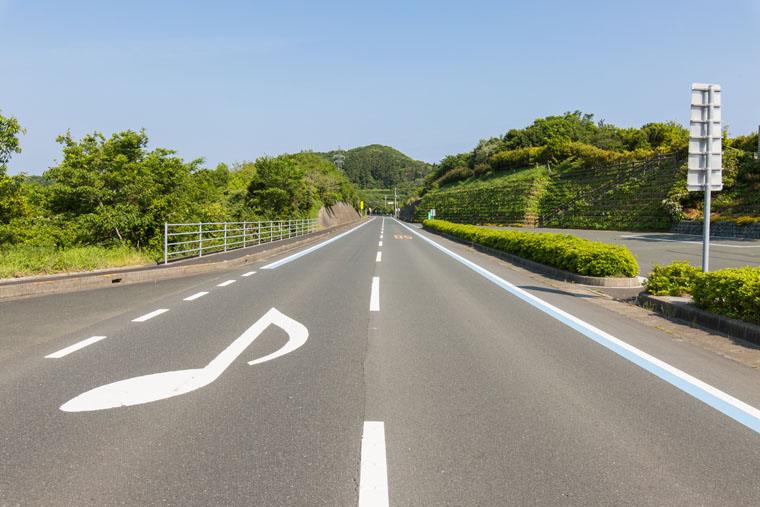
Cape Sada Melody Line is the nickname for a section of National Route 197 from Yawatahama City to the town of Ikuta in Ehime’s Nishiuwa District. Inspired by Sadamisaki Peninsula — where you can hear the sounds of nature from the breeze, waves, and chirping birds — this stretch of the road was constructed to play a melody created by tire noise when a car drives over it. If you’re renting a car for your trip to Shikoku, be sure to come through and enjoy the two roadside rest areas along the way.
Imabari City, Ehime Prefecture
Towel Museum Ichihiro
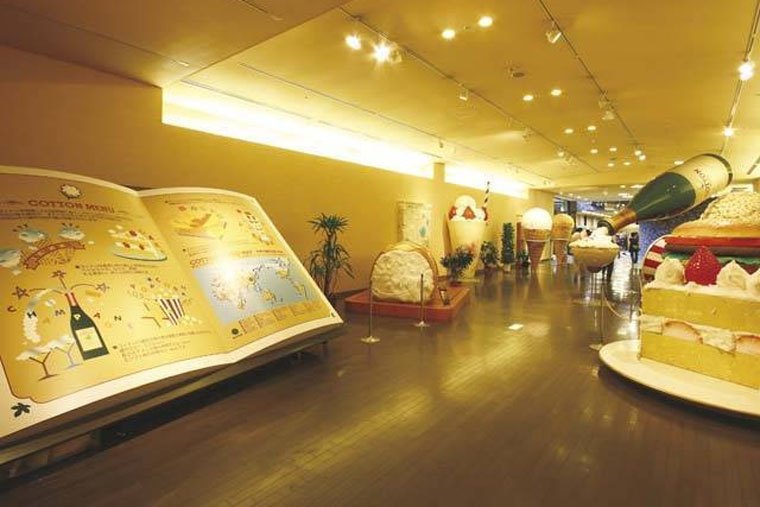
The world’s only museum dedicated to towels can be found in Imabari, Japan’s largest towel-producing town. In addition to an extensive European-style garden with seasonal flora, the museum features stores and a restaurant, making it a great place to spend the day. A guided tour of the towel factory is also available (for a fee).
- Hours of operation
- 9:30 a.m.–6:00 p.m.
- Fees
- Adults, 800 JPY; junior high school students, 600 JPY; elementary school students, 400 JPY
- Access
- About one hour and 30 minutes by car from Matsuyama Airport, about 20 minutes by car from JR Imabari Station, or about 15 minutes by car from the Imabari interchange.
Minamiuwa District, Ehime Prefecture
Shiden-kai Exhibition Hall
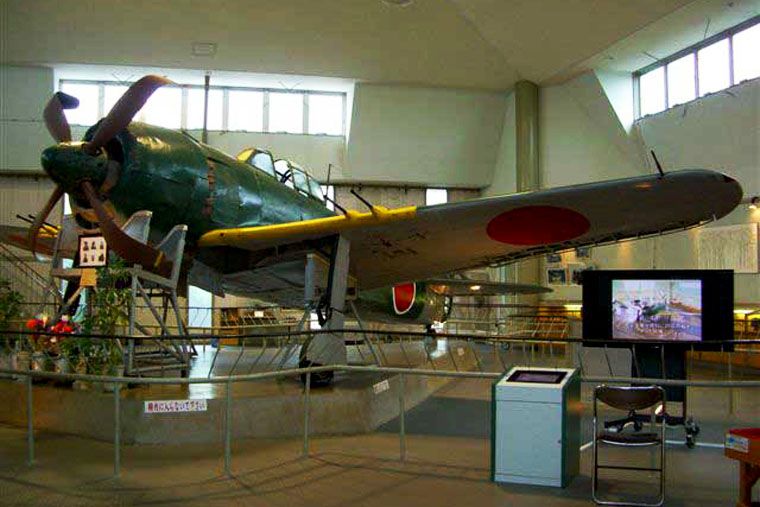
This exhibition hall features the fighter aircraft “Shiden-kai”, which was developed by the former Imperial Japanese Navy near the end of the war. Of the four in existence, the only one in Japan is on display here. It was lifted from the seabed of Hisayoshi Bay in Johen Town of Ehime’s Minamiuwa District when local divers discovered it in 1978.
- Hours of operation
- 9:00 a.m.–5:00 p.m.
- Access
- About two hours and 30 minutes by car from Matsuyama Airport, about 60 minutes by car from JR Uwajima Station, about 10 minutes on foot from the Ainancho Johen bus stop after a 15-minute ride on the Uwajima Bus departing from JR Uwajima Station on the Funakoshi Sotodomari Line, or about 90 minutes by car via National Route 56 from the Nishiuwa interchange on the Matsuyama Expressway.
Kochi Prefecture
Kochi Prefecture, Ehime Prefecture
Niyodo River (Nakatsu Gorge)
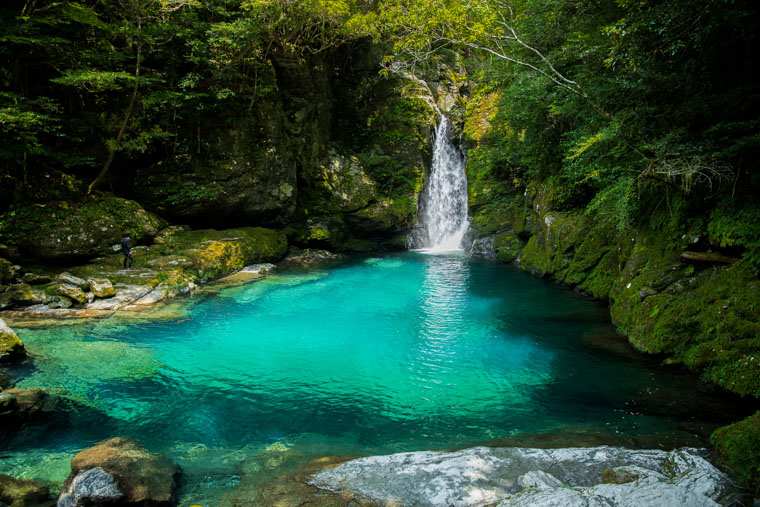
The Niyodo River flows through Kochi and Ehime prefectures and is designated as a Class A river. Located upstream is Yasui Gorge, referred to as the most beautiful place along the Niyodo River; you’ll also find famous rejuvenating spots such as Mikaeri Falls and Hiryu Falls as well. Marvel at the enigmatic waters of Suishobuchi, which change color with the season and time. The “Niyodo Blue” shade of the turquoise water is especially stunning. Nakatsu Gorge is located further downstream where the water glows emerald green.
Muroto City, Kochi City, Tosa City, Kuroshio Town in Hata District, and Tosashimizu City, Kochi Prefecture
Whale Watching
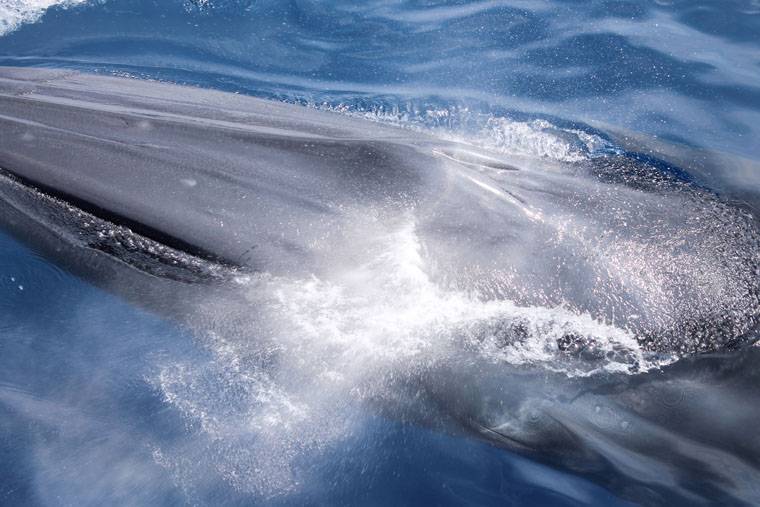
Encounter a variety of whale species while whale watching at Tosa Bay. If you sail out to sea, you could chance upon the following: Bryde’s whales, sperm whales, minke whales, sei whales, pods of Risso’s dolphins and bottlenose dolphins, and other whales over 30 feet long. Try to catch sight of these whales swimming gracefully and freely in the ocean. The whale watching season is generally from April to October. (Please contact the relevant tourist agencies for more information.)
Nakatosa Town, Shimanto Town, Shimanto City, Kochi Prefecture
Low-water Crossings
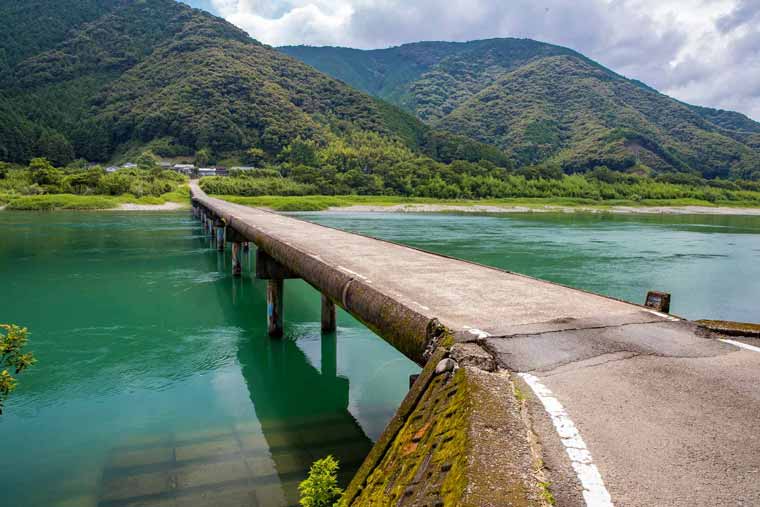
Several low-water crossings can be found on the Shimanto River. These bridges have no parapets and are designed to submerge in the river when the water level rises during typhoons. The picturesque scenery of the verdant mountains, blue river hues, and low-water crossings is one of the most distinctive of the Shimanto River. It’s exhilarating to cross the bridge — but take care not to fall off!
Muroto City, Kochi Prefecture
Cape Muroto
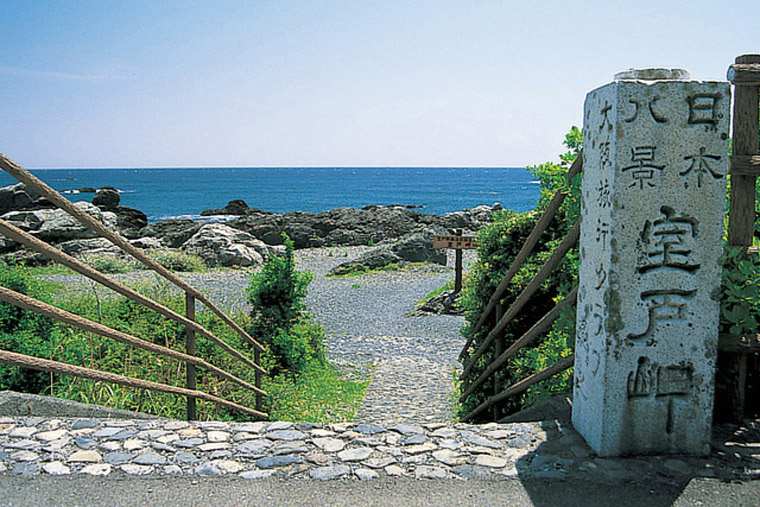
Designated as a location of national scenic beauty and part of Muroto-Anan Kaigan Quasi-National Park, Cape Muroto is one of the sightseeing spots that represents Kochi Prefecture. The symbol of Cape Muroto is a chalk-white lighthouse standing between the blue sky and the sea. Since 1902, the lighthouse has served as an illuminated guide for the safety of seafarers. It boasts the largest lens in Japan, measuring almost 8.6 feet in diameter.
- Access
- Take the Kochi Tobu Kotsu bus and get off at the Muroto Misaki bus stop. It’s about 20–30 minutes on foot from there on the pilgrimage road.
About 40 minutes on foot from the Muroto Skyline Noboriguchi bus stop. About five minutes on foot from the parking lot after traveling roughly 0.7 miles by car.
Kagawa Prefecture
Marugame City, Kagawa Prefecture
Marugame Castle
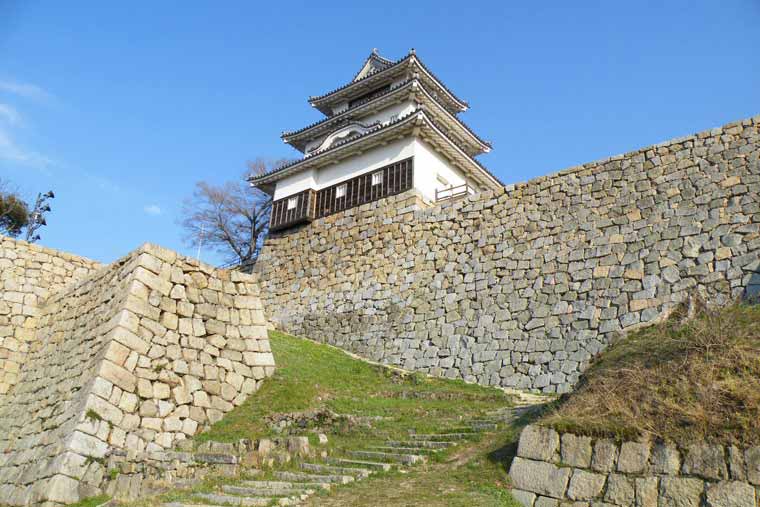
This famous stone-walled castle has been selected as one of the top 100 castles in Japan. It boasts the tallest wall in Japan with a height of over 196 feet. Catch the magnificent view of the Seto Inland Sea and Sanuki Plain from atop the castle tower! The castle was constructed at the beginning of the Muromachi period (1336–1573), and you’ll find yourself pondering the castle’s 400-year history during your visit. Another must-see attraction is the nearly 214-foot-deep Ninomaru Well, known as Japan’s deepest well.
- Hours of operation
- 9:00 a.m.–4:30 p.m. (last entry at 4:00 p.m.)
- Fees
- Adults, 200 JPY; children (elementary and junior high school students), 100 JPY
Groups (20 people or more), 20% off individual ticket prices stated above.
Free for residents of Marugame City who are 65 and older, physically or mentally disabled people (children), and their caregivers. - Access
- About 10 minutes on foot from JR Marugame Station. About 15 minutes by car from the Sakaide or Zentsuji interchange.
Marugame City, Kagawa Prefecture
Marugame Genichiro-Inokuma Museum of Contemporary Art
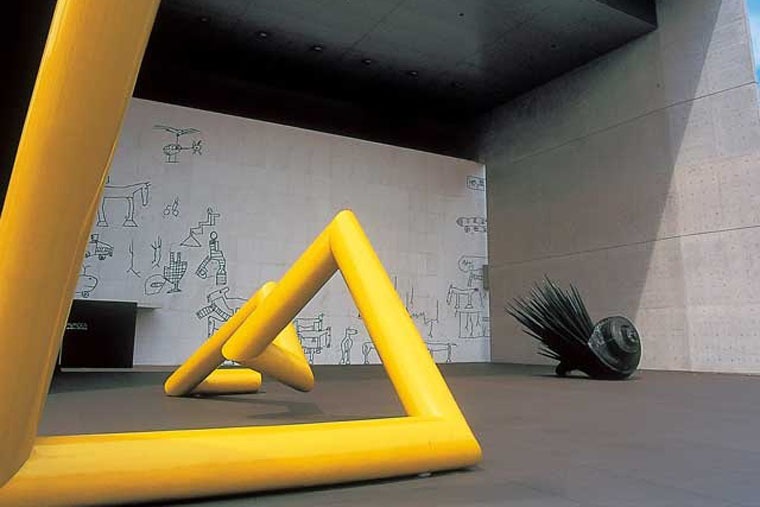
The museum is located by the train station and houses around 20,000 works by Genichiro Inokuma, an internationally renowned painter born in Kagawa Prefecture. The open and relaxing space was designed by the world-famous architect, Yoshio Taniguchi. In addition to the permanent exhibition of Genichiro Inokuma's works, the museum features special exhibitions showcasing Genichiro Inokuma and other contemporary art from within Japan and abroad.
- Hours of operation
- 10:00 a.m.–6:00 p.m. (last entry at 5:30 p.m.)
- Fees
- Special exhibitions: prices vary according to exhibition
Permanent exhibition: general admission, 300 JPY (240 JPY); university students, 200 JPY (160 JPY)
*Amounts in the parentheses indicate per-ticket prices for groups of 20 or more. - Access
- About one minute on foot from the south exit of JR Marugame Station.
Takamatsu City, Kagawa Prefecture
Ritsurin Garden
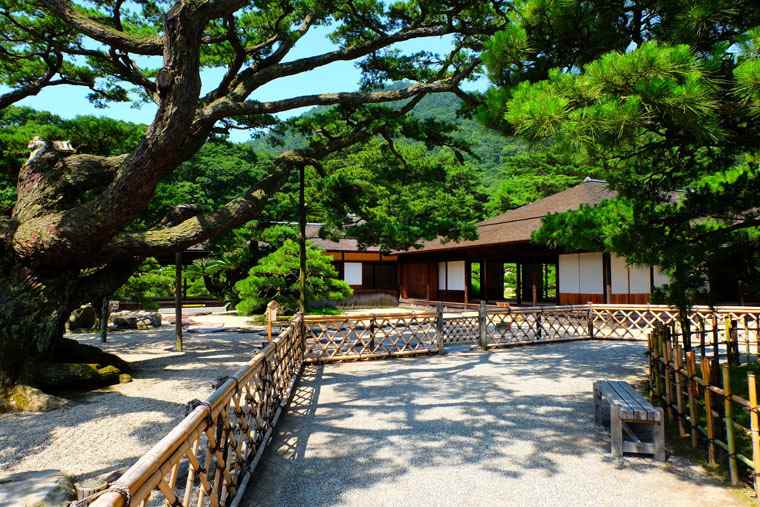
Ritsurin Garden is a traditional Japanese garden that’s been awarded the highest rating of three stars by a noted travel guidebook as a place worth visiting. The garden was built over a period of more than 100 years and its beauty has been passed down through the generations. There are many places to explore in the garden, but be sure to check out the Hokomatsu and Byobumatsu pine trees that have been carefully maintained for over 300 years; their branches are a sight to behold.
- Hours of operation
- January: 7:00 a.m.–5:00 p.m.
February: 7:00 a.m.–5:30 p.m.
March: 6:30 a.m.–6:00 p.m.
April: 5:30 a.m.–6:30 p.m.
May: 5:30 a.m.–6:30 p.m.
June: 5:30 a.m.–7:00 p.m.
July: 5:30 a.m.–7:00 p.m.
August: 5:30 a.m.–7:00 p.m.
September: 5:30 a.m.–7:00 p.m.
October: 6:00 a.m.–5:30 p.m.
November: 6:30 a.m.–5:00 p.m.
December: 7:00 a.m.–5:00 p.m. - Fees
- Adults, 410 JPY; children, 170 JPY
Groups (20 or more): adults, 320 JPY; children, 140 JPY
*Elementary and junior high students are considered children. Free for preschoolers.
*Admission is free on New Year’s Day (January 1) and Opening Anniversary Day (March 16). - Access
- About seven minutes by taxi from JR Takamatsu Station or 20 minutes by taxi from JR Ritsurin Station.
Takamatsu City, Kagawa Prefecture
Shikoku Village
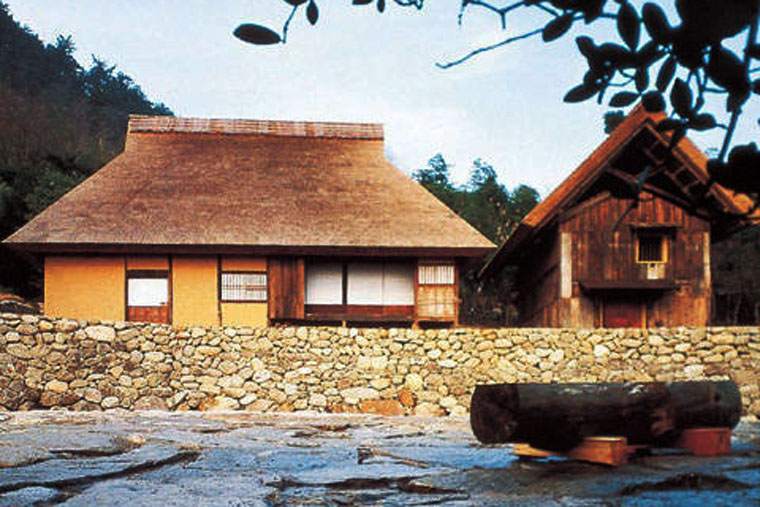
This museum showcases the ancient architecture of private homes dating from the Edo period (1603–1867) to the Taisho era (1912–1926). The village houses 33 structures relocated from all over Shikoku while preserving their original state. Immerse in the art and history of these vast grounds with a walking trail accessible to visitors. Paintings, sculptures, and works of art from the Orient are exhibited in Shikoku Village Gallery, designed by Tadao Ando.
- Fees
- General admission, 1,000 JPY; high school students, 600 JPY; elementary and junior high school students, 400 JPY
- Access
- About two hours by train from Shin-Osaka Station to Takamatsu Station.
About 10 minutes on foot from JR Yashima Station on the Kotoku Line, or about five minutes on foot from Kotoden-Yashima Station on the Shido Line.
Shodo Island, Kagawa Prefecture
Shodo Island
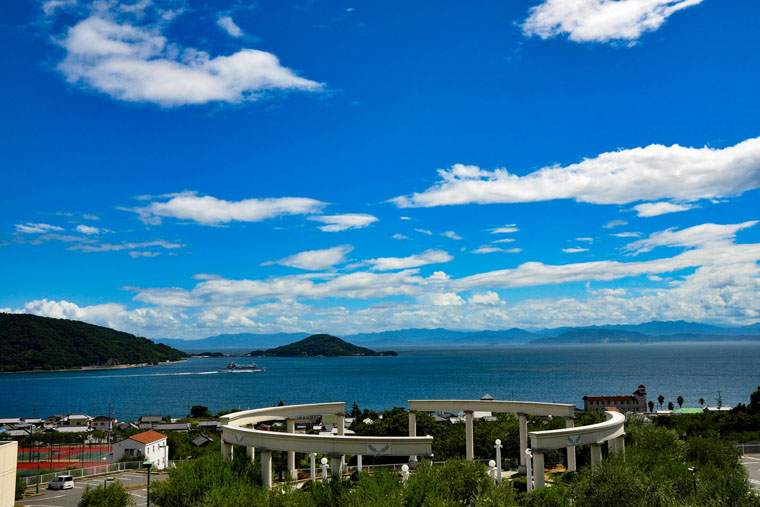
Shodo Island, located in the Seto Inland Sea, has a population of roughly 30,000 people. Famous for producing olives, the island is known also as “Olive Island”. Despite the island’s small size, it boasts numerous sightseeing and photography spots; taking the seasons into account, you’ll want to plan for your trip to Shodo Island in advance. The island is also known as a film location for the movie “Twenty-Four Eyes”.
Shozu District, Kagawa Prefecture
Shodoshima Olive Garden

Overlooking the serene waters of the Seto Inland Sea, this park exudes a Mediterranean atmosphere reminiscent of Greece. In addition to the abundance of olive trees, the park also cultivates herbs in the greenhouse. The mild climate, similar to the Mediterranean Sea, is perfect for a leisurely stroll. Popular among adults and children alike, the park features Grecian windmills which accentuate the likeness of Seto Inland Sea to the Aegean Sea, as well as open spaces that call to mind the ambience of Ancient Greece.
- Hours of operation
- 8:30 a.m.–5:00 p.m.
- Fees
- Free
- Access
- Get on the bus available at each port and get off at the Olive-ga-Oka bus stop.
Shozu District, Kagawa Prefecture
Marukin Soy Sauce Memorial Hall
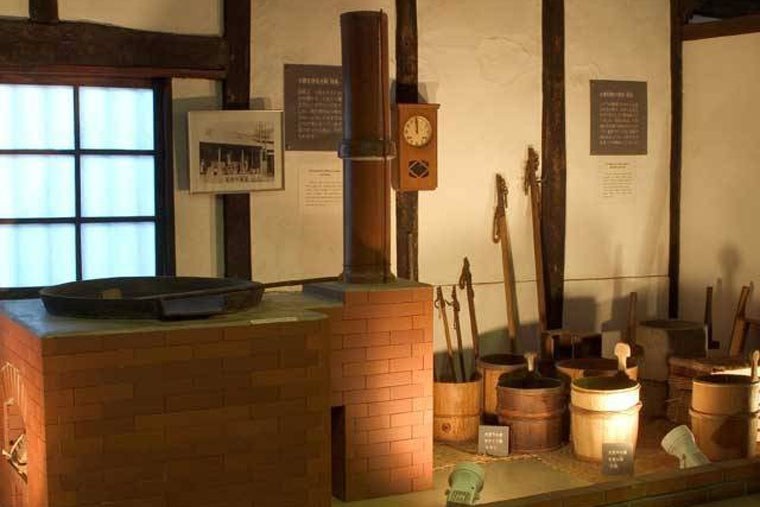
Marukin Soy Sauce is a famous soy sauce from Kagawa, brewed using time-honored techniques. Learn about soy sauce at the museum adjacent to the soy sauce factory. Inside, there’s a straightforward introduction of the soy sauce manufacturing process, and tools used in production are also on display. Besides checking out the souvenirs, don’t miss out on the soy sauce-flavored soft-serve ice cream that can only be found here. Built in the early Taisho era (1912–1926), this building is Japan’s largest gassho-zukuri — a traditional Japanese architectural style with a steep thatched roof — and is designated as a National Registered Tangible Culture Property.
- Hours of operation
- 9:00 a.m.–4:00 p.m.
*Hours from July 20 to August 31 and October 16 to November 30 are 9:00 a.m.–4:30 p.m. - Access
- About three minutes by car from Sakate Port.
Shozu District, Kagawa Prefecture
Angel Road
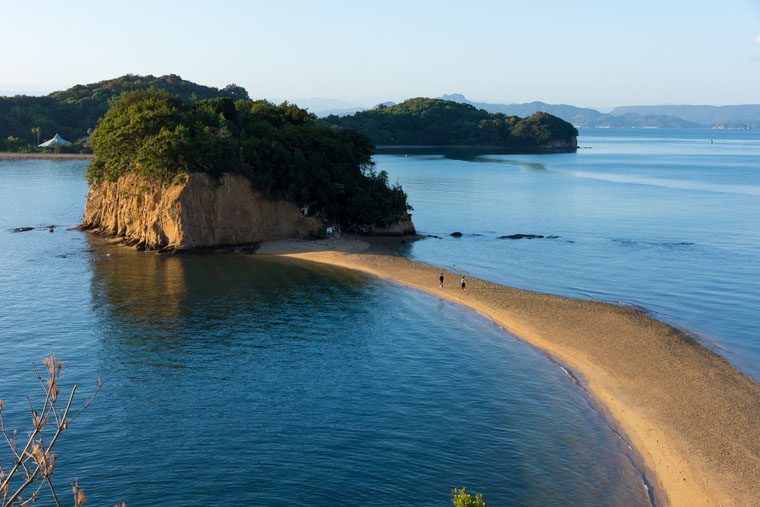
Angel Road is a roughly 1,640-foot-long sandbar that only appears twice a day during low tide. It’s said that if lovers cross the path hand-in-hand, an angel will descend and bless their love, which has made this sandbar quite a popular proposal spot. It’s also often used for filming TV and drama productions.
- Access
- About 10 minutes by bus from Tonosho Port.
Nakatado District, Kagawa Prefecture
Kotohira-gu Shrine
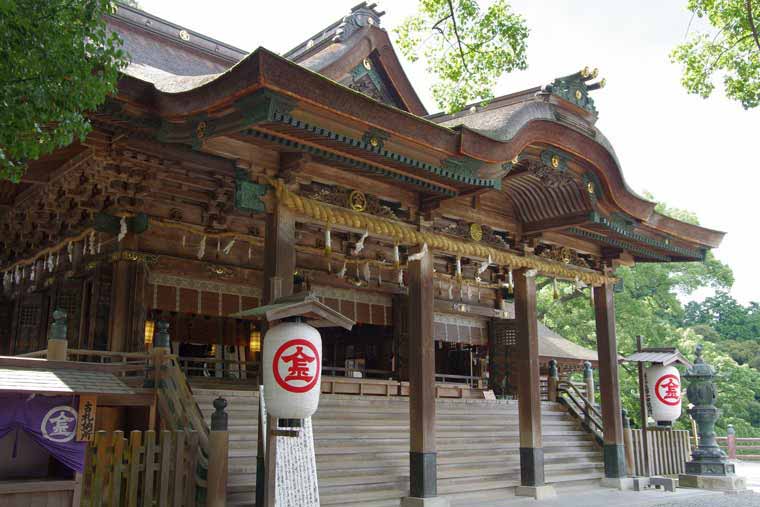
Kotohira-gu Shrine, popularly known as Konpira-san, is located halfway to the top of Mount Zozu in the town of Kotohira in Kagawa’s Nakatado District. It is worshipped as a guardian deity of maritime safety and is revered by fishermen, sailors, and maritime professionals. Known for its long and arduous path consisting of 1,368 stone steps to the shrine, the Konpira Stone Steps Marathon is held every year in conjunction with the annual festival.
- Hours of operation
- April–September: doors open at 6:00 a.m. and close at 6:00 p.m.
October–March: doors open at 6:00 a.m. and close at 5:00 p.m. - Access
- By JR train: about 20 minutes on foot from Kotohira Station on the Dosan Line. (About 60 minutes by Limited Express from JR Okayama Station via the Seto-Ohashi Line.)
By subway: about 15 minutes on foot from Kotoden-Kotohira Station. (Roughly 60 minutes by train from Takamatsu-Chikko Station.)
Takamatsu City, Kagawa Prefecture
Megi Island, Onigashima Cave
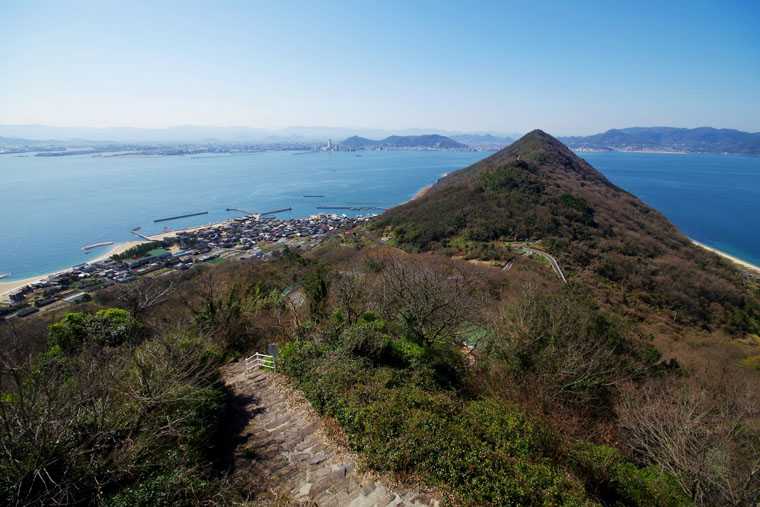
This island is said to be associated with the Ogre Island mentioned in the Japanese fairy tale “Momotaro”. The island’s nearly 1,480-foot-deep cave is believed to be inhabited by ogres. Check out the ogre-shaped dolls displayed in various chambers and wells within the cave.
- Hours of operation
- Onigashima Cave: 8:30 a.m.–5:00 p.m.
- Fees
- Onigashima Cave: adults (high school students and up), 500 JPY; children (elementary and junior high school students), 250 JPY; seniors 65 years and up, 450 JPY
*10% discount for groups (15 or more): adults, 450 JPY; children, 230 JPY
*Kindergarten children are generally free, except when in groups of 15 or more, in which case the fee is 100 JPY per child. - Access
- About 20 minutes by Meon ferry from Takamatsu Port (370 JPY one way).
Tokushima Prefecture
Tokushima Prefecture
Oboke and Koboke Gorges
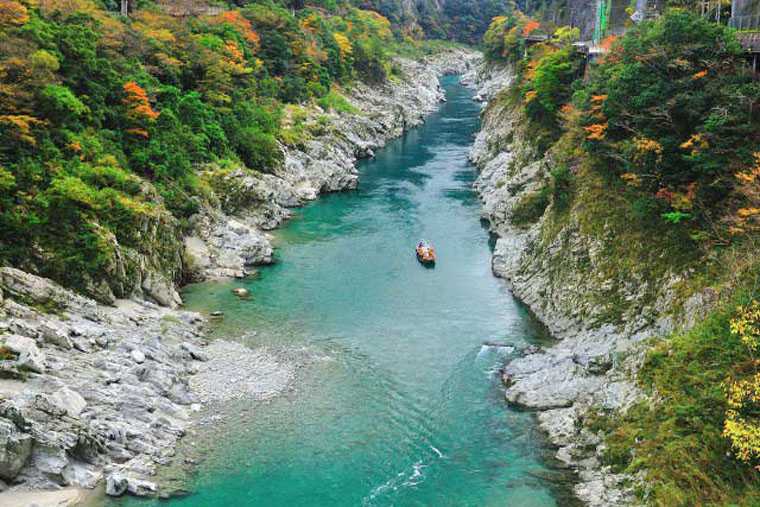
This gorge, which resembles towering marble sculptures, is formed from the water erosion of crystalline schists. Soak up the thrill of a whitewater rafting adventure along the river, where spring’s cherry blossoms and autumn’s crimson foliage add color to the clear stream. Oboke Gorge was designated as a national natural monument in 2014 and as a location of national scenic beauty the following year. Take a ride on the popular sightseeing boat cruise and revel in the spectacular scenery Oboke Gorge offers. See the conglomerate schist national monument up close, too.
- Access
- About 35 minutes by car from the Ikawa-Ikeda interchange on National Route 32 bound for Kochi, around 30 minutes to an hour on foot or 5–20 minutes by car from JR Oboke Station.
Miyoshi City, Tokushima Prefecture
Iyanokazura Bridge
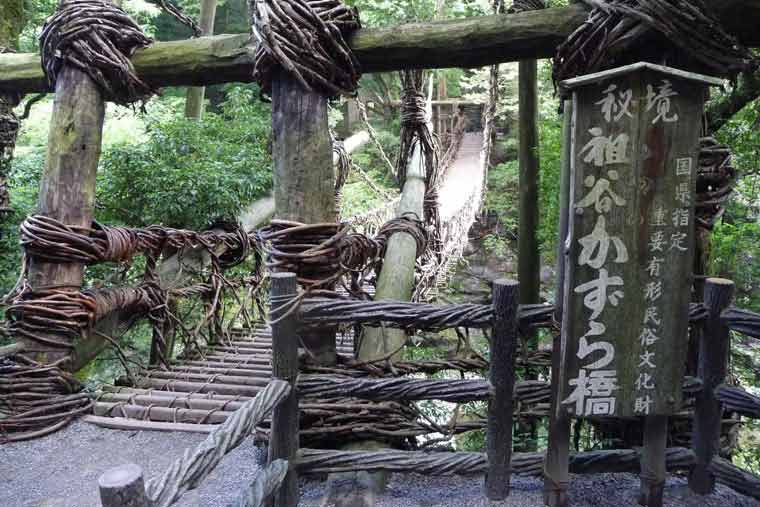
The Iyanokazura Bridge is a primitive suspension bridge made from kiwi vines. Located in the village of Nishiiyama in Miyoshi City, Tokushima Prefecture, it is the prominent one out of the three bridges in the city. Go a little further to Higashiiya Sugo and you’ll discover the other two bridges.
- Fees
- Adults, 500 JPY; children (elementary school students), 350 JPY
- Access
- By car: about one hour from the Ikawa-Ikeda interchange along National Route 32 (bound for Kochi) followed by Prefectural Routes 45 and 32 to the local road.
By train: Get on the Shikoku Kotsu Bus (bound for Kazura Bridge or Kubo) from JR Oboke Station. Get off at the Kazurabashi bus stop and it’s a five-minute walk from there.
Tokushima City, Tokushima Prefecture
Awa Odori Kaikan
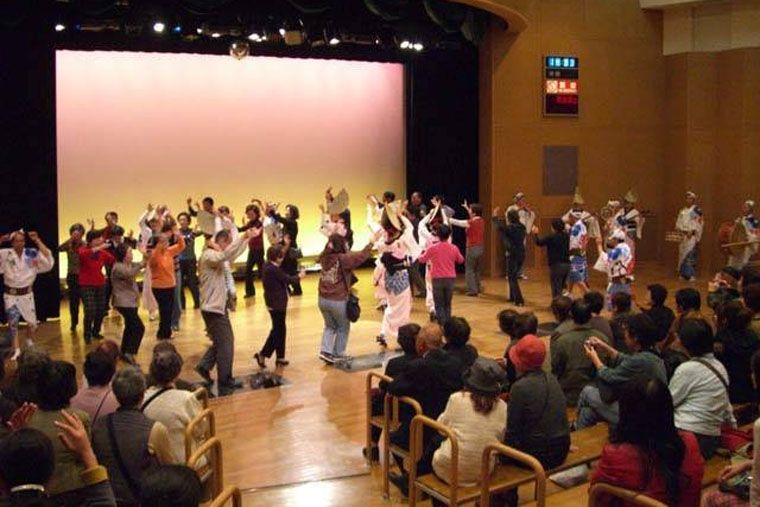
Come experience the Awa Odori dance all year round at Awa Odori Kaikan, where four to five performances are held a day. On the third floor of the facility is the Awa Odori Museum, a small museum where you can delight in discovering the history of Awa Odori dance with actual costumes and instruments on display. The souvenir store Arudeyo Tokushima can be found on the first floor. Start your learning journey of Tokushima here!
- Hours of operation
- 9:00 a.m.–5:00 p.m.
- Access
- About 10 minutes on foot from JR Tokushima Station along Shinmachibashi Street in the direction of Mount Bizan and Shinmachi Bridge.
Tokushima City, Tokushima Prefecture
Bizan Ropeway
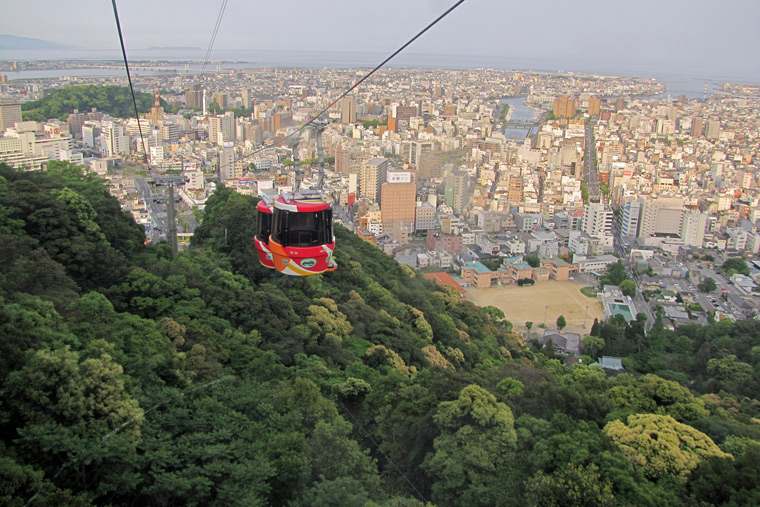
Bizan Ropeway is located on Mount Bizan in Tokushima City and is operated by the municipal government. It takes only six minutes to ride to the summit of Mount Bizan. Delight in the sweeping views of the Tokushima Plain from the observation deck; you can even spot the Yoshino River and Awaji Island. By the way, the starting station of the ropeway is on the fifth floor of the Awa Odori Kaikan mentioned above — an easy hop on the ropeway right after an Awa Odori dance performance.
- Hours of operation
- 9:00 a.m.–5:30 p.m.
*Limited nighttime hours of 5:30 p.m.–9:00 p.m. from April 1 to October 31. - Fees
- One-way ticket: adults (junior high school students and up), 610 JPY; elementary school students, 300 JPY
Roundtrip ticket: adults (junior high school students and up), 1,020 JPY; elementary school students, 510 JPY - Access
- About 15 minutes by bus from Kusakabe Port.
Ama District, Tokushima Prefecture
Hiwasa Sea Turtle Museum
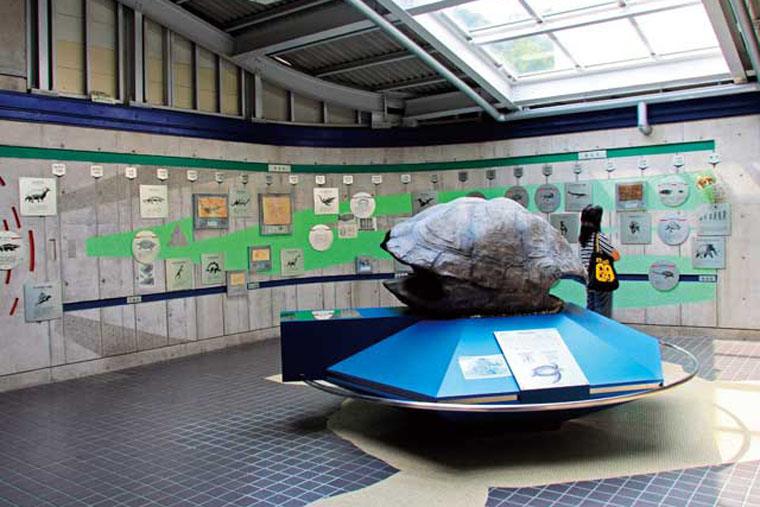
Watch the swimming turtles and have fun learning about the evolution and ecosystem of turtles at this museum. Every year from May to August, loggerhead sea turtles come ashore to lay their eggs on the southern shores of the prefecture and on Ohama Beach located right in front of the museum. If you’re lucky, you might just be able to witness this moving scene.
- Hours of operation
- 9:00 a.m.–5:00 p.m.
- Fees
- Adults, 600 JPY; junior high and high school students, 500 JPY; elementary school students, 300 JPY
- Access
- About 20 minutes on foot from JR Hiwasa Station, with taxis available.
Naruto City, Tokushima Prefecture
Naruto Whirlpools
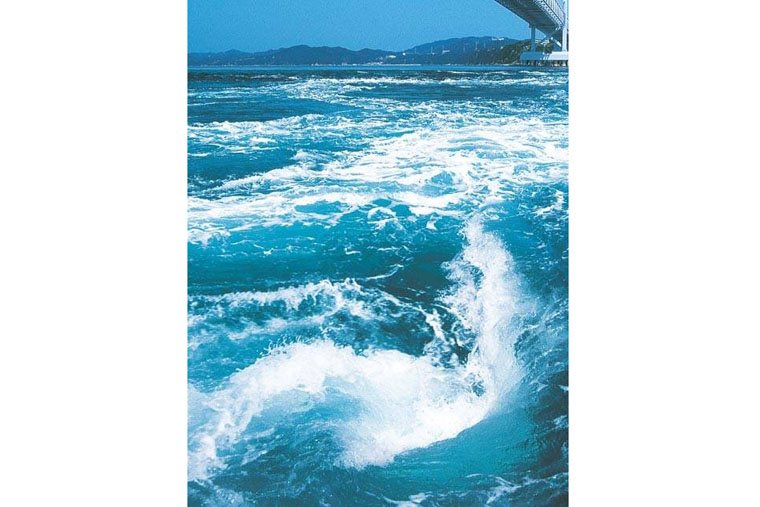
The Naruto Whirlpools occur in the Naruto Strait between Naruto City in Tokushima Prefecture and Minami Awaji City in Hyogo Prefecture. During high tides, the whirlpools are said to reach a maximum diameter of nearly 100 feet, considered to be some of the largest in the world. Jump on a sightseeing boat and see these powerful whirlpools up close.
- Access
- About 15 minutes by car from Naruto Station to the boarding area of the whirlpool sightseeing boats.
Naruto City, Tokushima Prefecture
Uzu no Michi
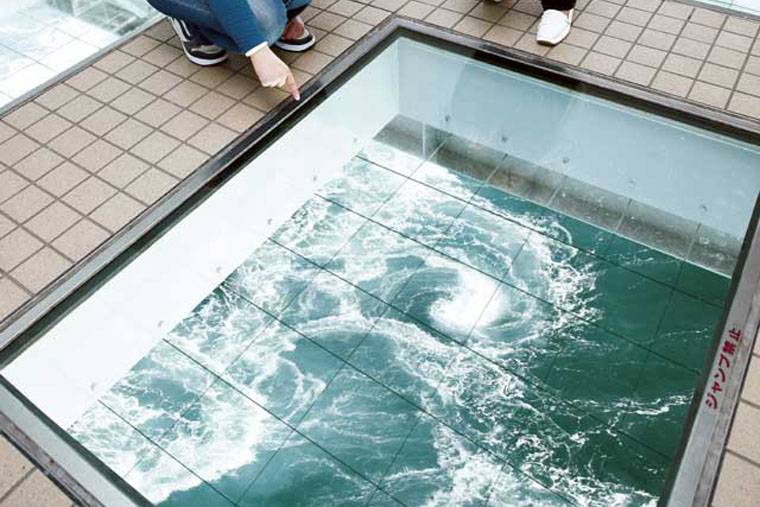
Uzu no Michi is a walkway constructed inside the girder of Onaruto Bridge on the Naruto Strait. Peer into the whirlpool from the glass floor suspended more than 145 feet above the sea. There are also virtual facilities available to entertain the kids. The Seto Island Sea is home to bountiful marine life, and the small aquarium Mini Mini Uochingu features fish that live in the Naruto Strait. Come meet the adorable fish here.
- Hours of operation
- Summer season (March to September): 9:00 a.m.–6:00 p.m. (last entry at 5:30 p.m.)
Golden Week and summer holiday periods: 8:00 a.m.–7:00 p.m. (last entry at 6:30 p.m.)
Winter season (October to February): 9:00 a.m.–5:00 p.m. (last entry at 4:30 p.m.) - Fees
- Adults, 510 JPY; junior high and high school students, 410 JPY; elementary school students, 250 JPY
Groups (20 or more): adults, 410 JPY; junior high and high school students, 320 JPY; elementary school students, 200 JPY - Access
- About 60 minutes on the Tokushima Bus bound for Naruto Park from JR Tokushima Station.
About five minutes by car from the Naruto-kita interchange on the Kobe-Awaji-Naruto Expressway.
Naruto City, Tokushima Prefecture
Otsuka Museum of Art

This museum was established in Naruto City, Tokushima Prefecture, by the Otsuka Group to commemorate the 75th anniversary of its founding. The museum boasts artworks by Picasso, Renoir, and da Vinci; with over 1,000 renowned western paintings on display, it’s a great place for Japanese locals to appreciate art without having to travel abroad. The fact that they’re all full-size reproductions of the original paintings makes them all the more attractive.
- Hours of operation
- 9:30 a.m.–5:00 p.m.
- Fees
- Elementary to high school students, 540 JPY; university students, 2,160 JPY; general admission, 3,240 JPY
- Access
- Get on the local Tokushima Bus from Naruto Station and get off at the Otsuka Kokusai Bijutsukan-mae bus stop.
Miyoshi City, Tokushima Prefecture
Okuiya Kanko Shuyu Monorail
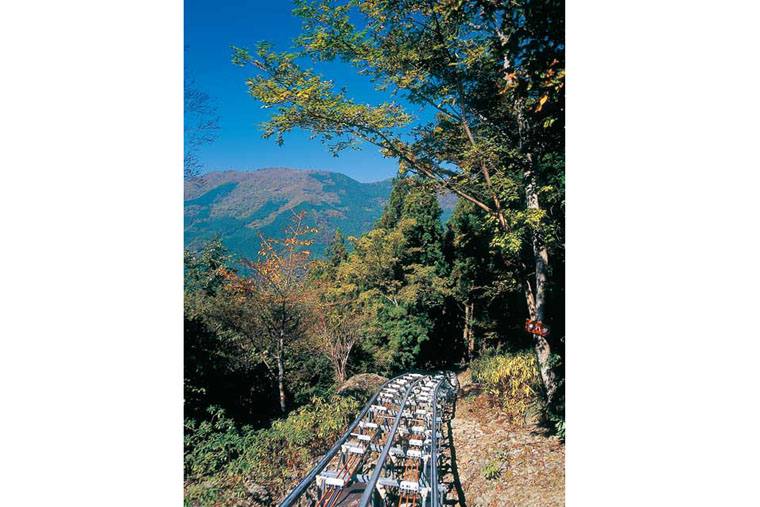
Immerse yourself in the forest and feel as if you were mountain climbing while the monorail travels at a leisurely pace. This two-seater monorail departs every four minutes with a ride time of roughly 65 minutes. The track length is about 2.8 miles, with an elevation change of nearly 1,940 feet, a maximum inclination of 40 degrees, and a peak height of over 4,500 feet; these figures make it stand out as the world’s best sightseeing monorail!
- Hours of operation
- April to September: 8:30 a.m.–4:00 p.m.
October to November: 8:30 a.m.–3:30 p.m. - Fees
- Adults, 2,000 JPY; children, 1,000 JPY
- Access
- By car: From the Ikawa-Ikeda interchange, take National Route 32 (bound for Kochi) towards Prefectural Route 45, followed by Prefectural Route 32 before connecting to National Route 439 (bound for Mount Tsurugi). The whole journey takes about two hours by car.
By bus: Get on the Shikoku Kotsu Bus bound for Kubo from JR Oboke Station and get off at the Kubo bus stop. From there, get on the municipal bus bound for Mount Tsurugi and get off at the Sugeoi bus stop. It will be a 30-minute walk from the bus stop.